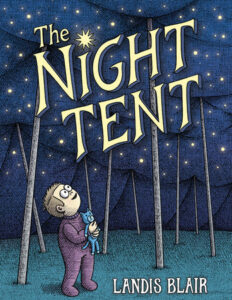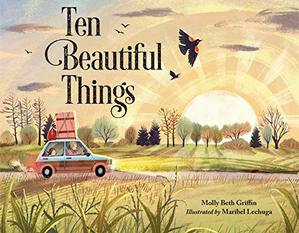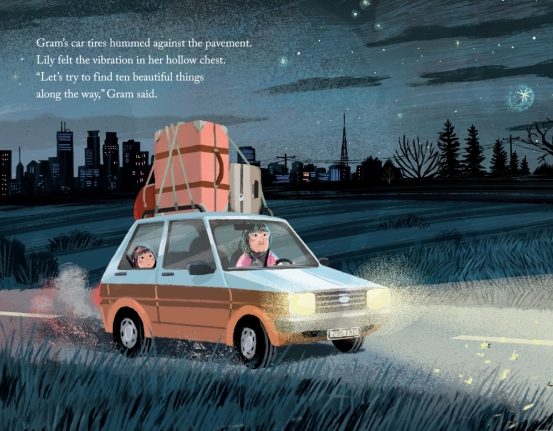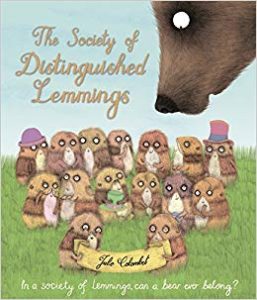18 April 2023
40 pages
This month’s PB review is by Ryan G. Van Cleave (Owner/Operator of Only Picture Books) and OPB friend, Rebecca Zomchek.
–Ryan’s Review of the Writing–
From the first page of Landis Blair’s debut picture book, readers encounter a scenario we all know–a child in bed is uncomfortable when considering all the worrisome things that MIGHT be lurking in the dark. The more he tries not to think about it, the more he does.
Then the child (his name is Watson) notices an odd light coming from beneath the covers, so what else can he do but check it out? Once he ducks beneath the covers, he finds himself under a giant tent where the roof is covered with stars (thus the title, one assumes).
It’s more than a tent, though–there on the ground before Watson is a magical pathway weaving its way to a strange forest. Yes, there are unmistakable Where the Wild Things Are vibes here as Watson encounters creatures among the trees. We already know he’s scared of creatures in the night, so it’s no shocker that he hides at first, but after giving us the ongoing refrain (“and since Watson wasn’t sleepy”), which justifies his decision to proceed each time in the face of potential peril, he joins them as “he ran and played with them along the forest path.”
Despite Watson’s insistence that he’s not tired, he looks sleepier by the page as he gets on a trolley and “traveled through an ancient city, along treacherous cliffs, and over the sea to a tiny island with a very tall tower.” Up he climbs as his eyes droop and his shoulders slump, and then he crawls out from under the cover and is zonked–way too tired to worry about monsters or darkness or anything except sleep.
I’ll let Rebecca explain how the art steals the show here, but I can see where parents might be pleased how this story demonstrates how a child can find their way to sleep on their own. Yeah, it’s Maurice Sendak with kid gloves, but the dreamlike art, gentle mood, and quiet, comforting language will be welcome fare for many families.
4 out of 5 pencils
–Rebecca’s Review of the Illustrations–
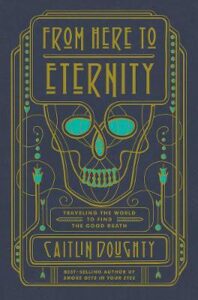 I first became aware of Landis Blair’s work from his illustrations for From Here to Eternity by Caitlin Doughy. His pen and ink work interested me then as I am a fan of both his style and influences, and I was very excited for the opportunity to see and review his debut picture book.
I first became aware of Landis Blair’s work from his illustrations for From Here to Eternity by Caitlin Doughy. His pen and ink work interested me then as I am a fan of both his style and influences, and I was very excited for the opportunity to see and review his debut picture book.
In a layered style full of strong ink values and hatch marks, reminiscent of both Edward Gorey and Tove Jannson, Blair takes on a night-time adventure with young boy Watson and how his imagination takes him from being afraid of the darkness in his room into a sprawling Where the Wild Things Are type of adventure through a magical landscape.
Watson tries and fails to sleep while being afraid of his dark bedroom. After discovering a light coming from under his covers we and Watson go on a starlit journey through deep forests, meeting friendly monsters, and traveling down a winding path to a high tower. These are all depicted in cool blues, greens and purples, with pops of muted yellow and black crosshatching applied to add depth and texture. This helps with both the nighttime feeling and both the idea of being outside and inside a dream.
We and Watson discover just how far our imaginations can take us and how the power of creativity and thinking of positive things can help us overcome our fears and find peace and rest.
Blair balances his many armed and mix and match animal/monsters and darker color palette with whimsy, and inviting smiles, managing to side-step being scary and creating a world that feels very dream-like. The story itself is simple and straightforward but is warm and gentle which helps balance the surreal world he creates. Watson also being one of the warmest elements in the books helps draw our eye to him and the many long paths create fun eye movement as you move through the story.
I hope this book lulls many children to sleep while following Watson’s journey, just as it did for him. I also hope anyone enjoying the book is able to twinkle with their own stars when faced with worries and fears, remembering that our thoughts and dreams can be there for us when things are dark.
4.75 out of 5 crayons

Rebecca Zomchek is a children’s book illustrator who has worked as a concept artist and cartoonist. She earned her BFA from Syracuse University and her MFA from The School of Visual Arts; she is now the Associate Dean of Entertainment Design at the Columbus College of Art and Design. Rebecca loves watching the stars and going on adventures through the woods.
Visit her at www.rzillustration.com.


